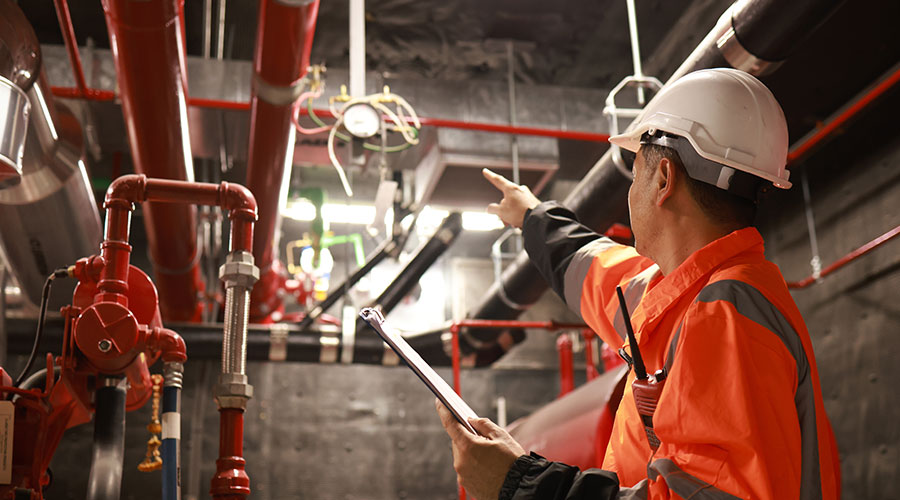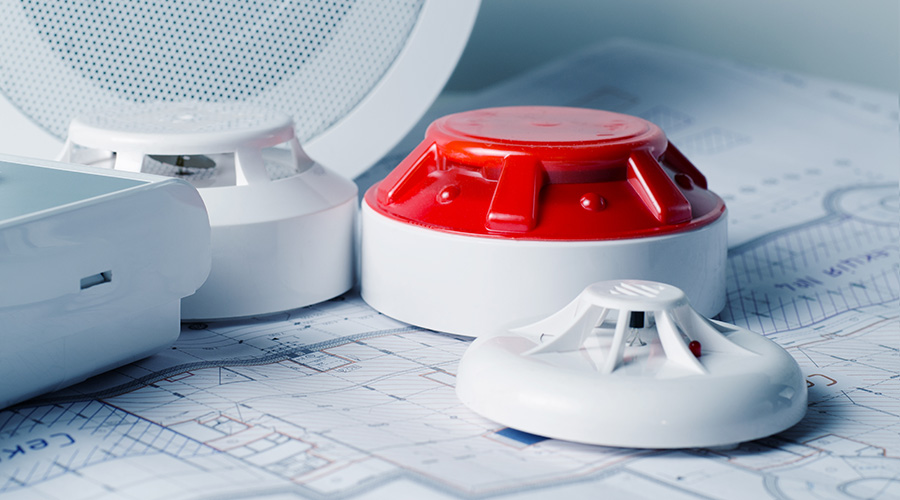Fire Suppression: Storage Spaces, Antifreeze Ban, Portable Extinguisher Monitors
Many of the recent advances in automatic fire sprinkler technology revolve around the protection of storage occupancies. These changes have been made because of the significant changes in the way storage occupancies are used and constructed. For example, ceiling heights are higher, storage racks are larger, and plastics are becoming more common. This has resulted in more challenging fires and the need to make improvements in the way storage occupancies are protected. Much of the research in this area has been devoted to finding newer types of sprinklers that are more effective in protecting storage occupancies.
One type of sprinkler that is designed to suppress a fire in a storage configuration is the early suppression fast response (ESFR) sprinkler. ESFR sprinklers are designed to respond to a fire at an early stage of development and to discharge a large quantity of water over the fire to achieve fire suppression. Having a quicker responding sprinkler that discharges larger water drops provides the momentum needed for water to penetrate a fire plume and reach the burning fuel. Another new sprinkler technology is the control mode specific application (CMSA) sprinkler. The CMSA sprinkler is designed to control a fire with a minimum number of operating sprinklers at a minimum pressure for a specific occupancy. Over the last few years, many types of ESFR and CMSA sprinklers have entered the marketplace. As with any other type of fire protection technology, it is important that the best type of sprinkler is used for the proper application.
Protecting sprinkler piping from freezing is another area where changes have been made. Previously, it was common to use antifreeze to prevent piping from freezing. However, recent fire incidents have identified concerns with the use of certain antifreeze solutions in sprinkler systems. Under certain conditions, solutions have been found to ignite when discharged from automatic sprinkler systems. As a result of these incidents, the fire protection community conducted research on antifreeze solutions used in sprinkler systems.
Based on this research, antifreeze solutions will no longer be permitted by NFPA 13 in new sprinkler systems, unless an antifreeze solution is specifically listed for use in such systems. There are also restrictions for existing installations. It is recommended that facility managers who have antifreeze solutions in existing facilities initiate a risk assessment that will form the basis of the proper strategy for protecting these existing systems from freezing.
Monitoring Systems For Portable Fire Extinguishers
Portable fire extinguisher monitoring systems have been gaining acceptance in the fire protection community. These systems provide a means for a building's fire and communication system to monitor portable fire extinguishers. For example, a portable fire extinguisher monitoring system has the capability of monitoring the stored inside pressure for individual fire extinguishers. When the pressure goes below a certain setpoint, a supervisory signal can be sent to the fire alarm control panel that will provide notification to maintenance personnel. It can also provide a signal when access to an extinguisher is blocked. To do this, the system is programmed with a time delay so that normal building activities do not send a signal.
More importantly, a portable fire extinguisher monitoring system can provide a signal when a fire extinguisher is lifted from its location. Not only will this technology provide notification when someone attempts to steal or vandalize a fire extinguisher, it provides notification when building personnel attempt to use it. Although a building's emergency plan should require building personnel to notify the fire department before using portable extinguishers, in a real fire situation this is sometimes not the case. Therefore, the signal from the monitoring system can help ensure that the proper authorities are notified earlier.
Related Topics:













